
In lieu of having a separate tracker, Neil not only took on this responsibility but also passed it onto us to participate. It was here at Welgevonden where we learned to read tracks, and even poop, to tell the story of what these animals have been up to. We learned how to differentiate tracks by animal, and based on which way their treads were pointing or how they were spaced out, which direction they were headed. We did this religiously every morning when we pulled out of our camp onto the main road, which Neil termed “reading the morning news.”
This morning’s news was pretty standard, so we just started driving to look for other clues. There were a few sightings recently of a cheetah and her cubs nearby so we drove to the grove that they frequented to have a look. No luck today, so we started driving around to see what else we could find. Things got exciting when a jackal popped out right onto the road and started trotting down the road. We must’ve followed him for half a mile without him paying us any mind, stopping to check out a few holes for food to scavenge on and then popping back on his route down the road. Jackals get a bad rap but they are actually adorable – they look like little foxes with big ears.

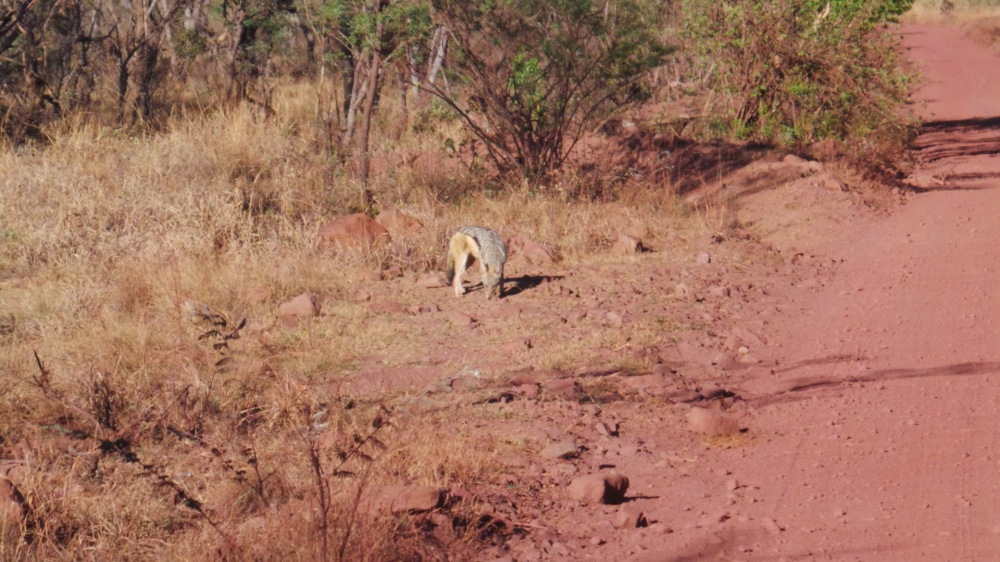

We changed course and headed to a valley and stream to see a herd of female elephants along with a bull in must. Elephants tend to travel in herds, this one about 11 in size, but usually there is only one male bull. When they are at a mature age, they go through a phase called must, when they are in prime mating form (and mood). We learned that the signs to look out for are a secretion below his eyes and by his feet. Contrary to popular belief, they aren’t by nature more aggressive, but can act that way if they’re particularly sexually frustrated. I guess they’re just like humans.

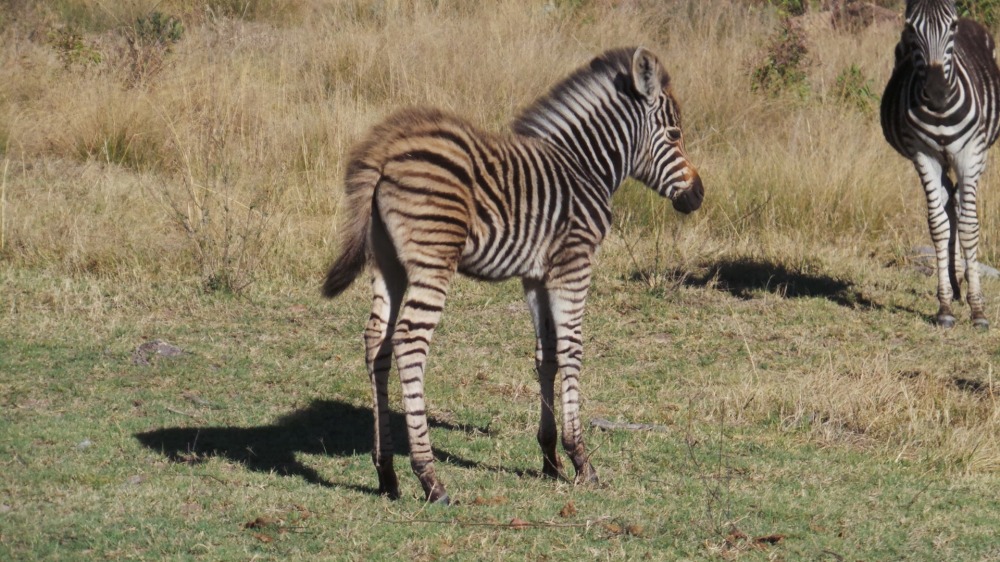


On our way back from our coffee stop, we saw quite a bit of antelope breeds as well as chacma baboons running down the road, a hippo submerged in a lake, and a dung beetle ball. The latter is truly an amazing feat of nature as the dung beetle will collect dung from the ground, roll it together into a ball much larger than itself, and lay eggs inside as the lining of the ball is the optimal temperature for hatching. They’re hard to find as they’re typically buried someplace, but we found one that a honey badger had dug up and cracked open to eat.

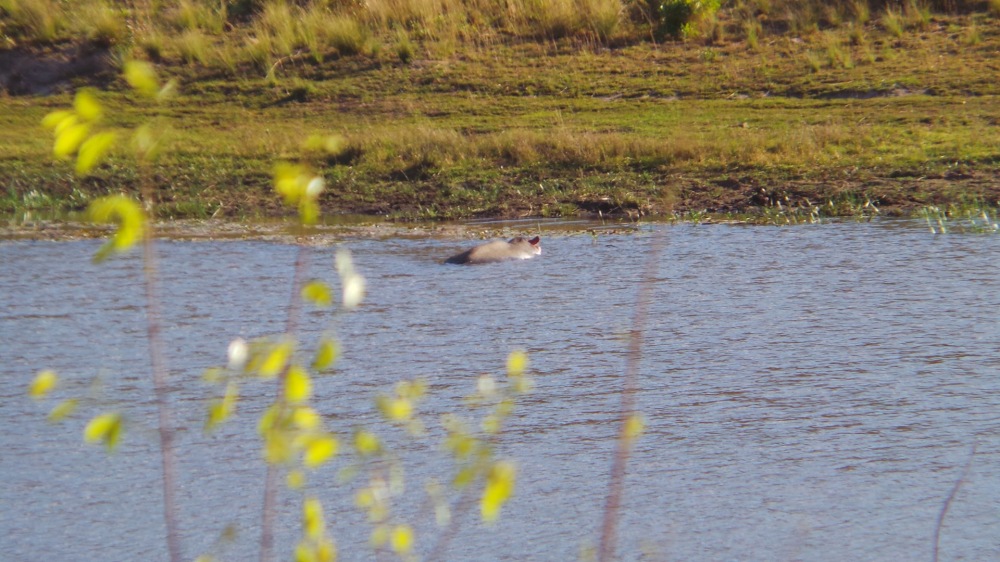
Makweti’s schedule was a bit different as we actually had 3 full meals a day and left a bit later in the mornings:
5am Wake up
5:30am Coffee/tea on the indaba
5:45am Depart for morning game drive
9:30am Return for breakfast
2:30pm 2-course lunch on patio
4pm Depart for evening game drive
7/7:30pm Return for 3-course dinner inside
So we came back to a hearty breakfast on the patio and ate while watching vervet monkeys chattering about and little mole-like animals called hyrax (which locals call dassies). We took advantage of the long afternoon down time by lounging by our pool to read and sun. However, this was relatively short-lived as our resident monkeys were quite curious and decided to come join us. It got to be a bit too much when one of the monkeys stood outside our balcony door, pondering how to open it while peering inside. This was a bigger concern with the baboons found in Madikwe, who could actually reach doors, but we were assured monkeys wouldn’t be able to reach the handles. This didn’t stop us from worrying so we spent the rest of the time sitting right in front of our door keeping guard. That kept the monkeys away.



This evening’s game drive was our last one with Arne and Greet, who we enjoyed joking around with, and the first one with a pair that was traveling named Liana and Oscar. Liana was from Berlin and Oscar from Italy, and we spent the entire trip unsuccessfully figuring out their story. We thought they were married until she made mention of her husband, yet they were publicly affectionate on their trip. She said they’d been planning their rendezvous for the greater part of a year…scandalous! Oscar didn’t speak much English, save for three phrases: “At 5 o’clock the phone goes RINGRINGRING!” “We saw 50 elephants,” (which was never true) and “I only want cappuccino from Italy!” The rest of the time, he would grunt while Liana would speak for him. It was always “Oscar would like…” “Oscar thinks…” “Oscar wants…” It became an inside joke for me and Doug that no one else would find funny. He also had a weird habit of photobombing all our pics.
We saw a few of the same animals from this morning, with the Nile Crocodile as the one exception, as he was hanging out in the same lake as the hippo. Not a lake I want to be hanging out in! Neil showed us a really cool find that he and some other guides from Makweti stumbled across and kept hidden. It was a brown hyena skull, a rare find as predators only die from old age or in a fight. In this instance, his skull was a bit smaller and some of his teeth were missing so Neil deduced that it was a juvenile male that likely lost in a territorial fight with another male.
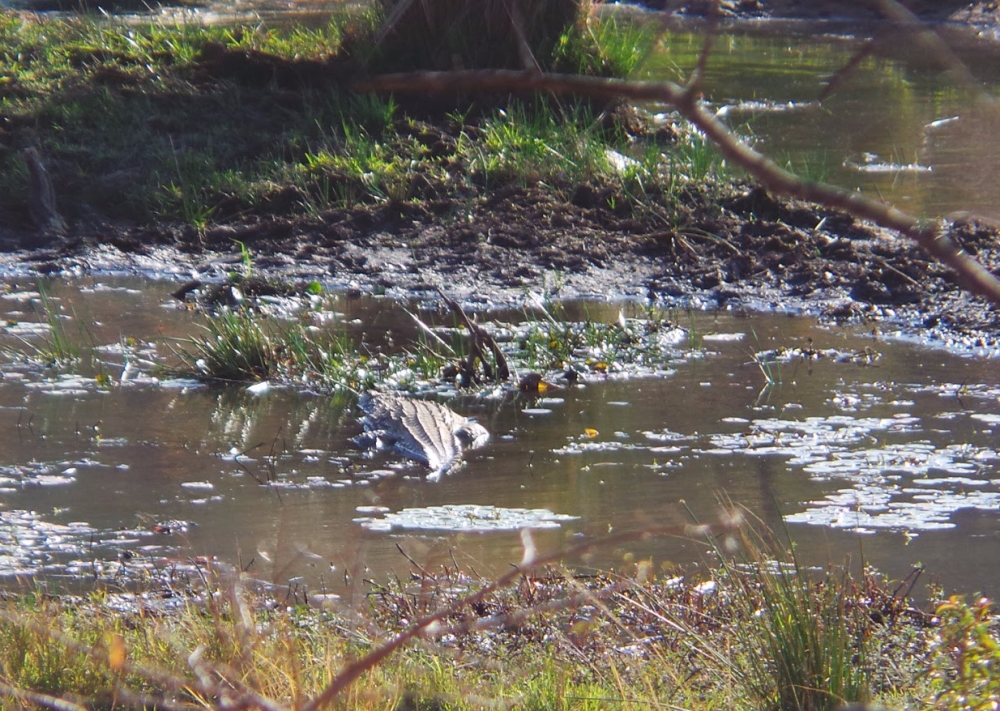
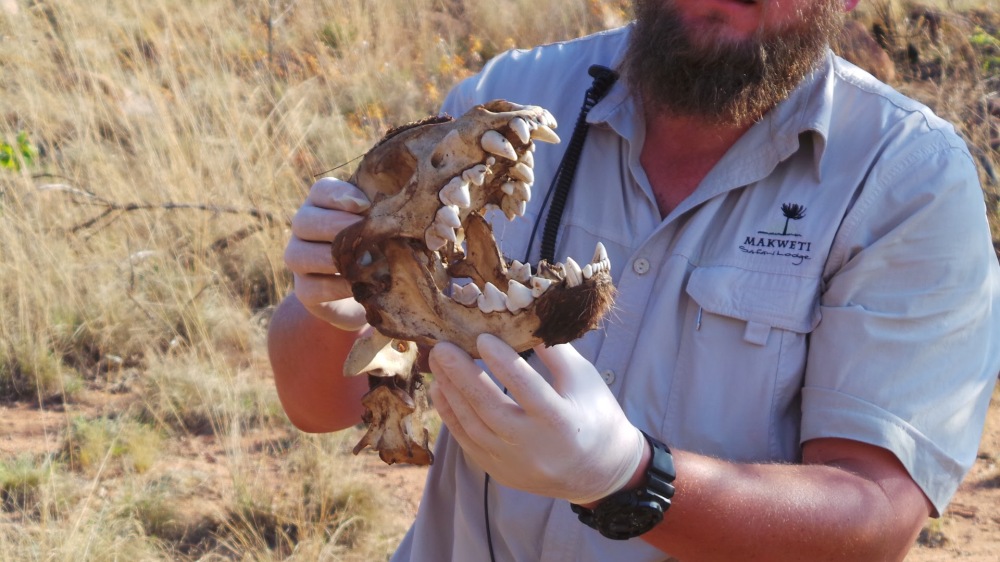
We got a call about a lioness and her two cubs, which we were dying to see. Unfortunately, everyone else got the call too so we waited our turn, and by the time we could get in there, the lioness was too far into the thicket. Remembering that we couldn’t go off-road here, we had no choice but to chalk it up as a loss. We definitely could sense Neil’s frustration with the other guides who were less experienced and had less regard for these animals, who likely followed too closely into her personal space and scared her off. Instead, we found a spot about a quarter of a mile away and set up shop for our sundowner. I’m not going to lie, it was a bit unnerving to be out in the open having a glass of wine when there was a lioness sighting not too far away! Neil reassured us it would take her at least 20 minutes to walk this way, which gave us more than enough time, but I made sure to finish my wine quickly. By this point, we completely trusted Neil though so if he said we were ok, I figured he could get us out of a bind.

We tried to drive over after our sundowner but the girls were still nowhere to be seen, so instead of sitting and waiting, we decided to respond to a different call about a male lion sighting nearby. Neil’s philosophy was, why sit and wait for a possibly sighting you may never see when you can be out there actively tracking? As was the case with most things Neil said, we were ok with this. By this time, it was pitch dark, so Neil was driving, shifting gears, and shining a light to look for the lion in an open field. It actually looked like a search party for America’s Most Wanted, what with 4 cars scanning the field for the lion. Pretty quickly though, Neil’s light stopped right on the lion – found him! He was headed away from us so we drove to the other side of the field to intercept him. I think there is some kind of unspoken rule for whoever is credited with the find, or a general respect for Neil’s seniority, that everyone let us through to get closest to the lion. It was such an amazing sighting as the lion walked right next to us for a bit, never minding us once, before he disappeared yet again into the grassy field on the other side of the street. Hopeful, we went to another side of the road to wait for him to reemerge but he never did. There were still a few cars on him by the original location that never saw him again either so our guess was he decided to just lay back down in the field.

That was the end of it for the night, but we capped off an exciting day of game viewing with a terrific meal. Today, we sat with Oscar and Liana (complete with “Oscar would like…”) and were also joined by Neil and Jess inside the main dining room. After another amazing meal, we were escorted back to our room by Neil so we could rest up for another big (and early!) day ahead.



Animals seen today: Little Bee Eater, Guinea Fowl, Wildebeest, Warthog, Black-backed Jackal, Wattled Lapwing, European Bee Eater, Cuckoo, African Grey Hornbill, Elephants, Impala, Kudu, Chacma Baboons, Hippo, Rhino and baby, Crocodile, Brown Hyena skull, Ostrich, Giraffe, Zebra, Lion at night